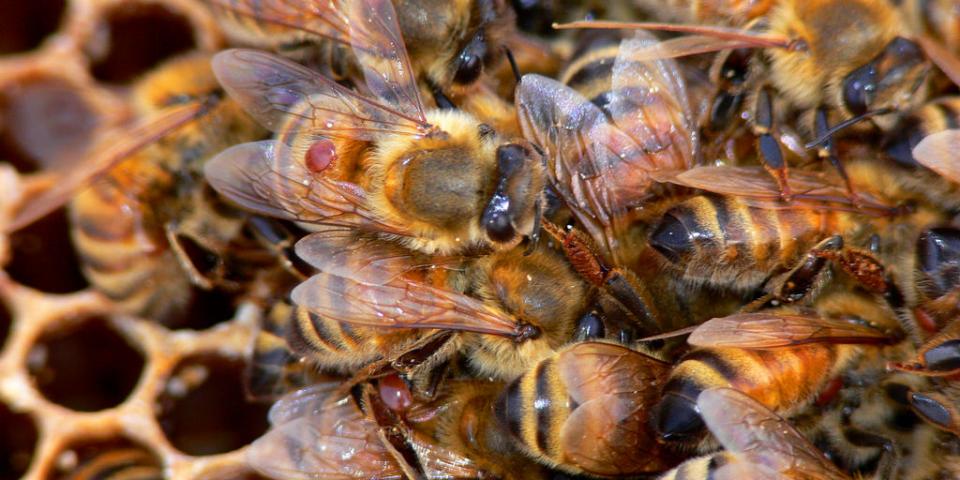- Posted By: beekeeper
- Comments: 0

Seven days ago I added a varroa board below the floor of my beehive as it's time to do a count of how many varroa mites are in the colony. These litter critters are not easily spotted with the naked eye yet for the bees themselves, it's like flying with a dinner plate on your back. They don't call this particular mite the varroa destructor for nothing as it can have a devastating affect on colonies of bees if left to get out of control and can collapse colonies and wipe them out.
Tonight I pulled the board out and brought it inside to take stock of what was on the board. For a newbee beekeeper, anything you do for the first time may seem a little daunting or your lack of knowledge means you may not always get things right first time. I honestly didn't know what to expect to see when looking at the board. Of course I've seen photos of what varroa looks like in books and online, but looking down on the board, all I could see was a mass of different coloured pollen with the odd pieces of dead bee in the debris. All looked fine and my bees, as far as I could tell, were healthy as I couldn't see any varroa mites. Look again... closer!
Goodness knows what size mite I was expecting to see but taking a closer look under a magnifying lamp with a bright light and a very fine pair of tweezers, I started seeing varroa mites that had dropped off the bees up in the brood chamber and onto the floor. One, two, three... the count went on until I had exhausted all four corners of the board and the final count was 44. I then had to divide this number by the number of days the board had been in place, so the average varroa mite drop was 6.3 per day. Is that good or bad? Time to go online and check with the varroa calculator and the results were there staring right back at me.
You selected Natural Mite Drop
44 Mites detected over 7 days
Month: June, Season: Medium, Drone Brood level: LowAverage Daily Mite Fall = 6.3 varroa mites
Estimated number of adult varroa mites in the colony = 250
Treatment is recommended in about 1 month (counting from day of first monitoring)
By using the calculator, the model predicts when the varroa numbers are likely to reach a critical level that requires treatment and the results are based on an estimate of how long it is likely to take before the varroa mite population reaches 1,000 - a level where treatment is recommended to avoid varroa causing significant adverse effects on the colony.
It looks like 25% of my bees are carrying more than their fair share of dinner plates on their backs so I need to start treating the girls to help reduce their heavy loads.
The timing of a course I'm going along to this weekend couldn't be better. The County Disease and Husbandry Day in Somerset will be a mixture of theory and practical beekeeping sessions looking specifically at apiary hygiene and disease control covering:
- Varroa biology, integrated pest management and approved veterinary medicines.
- Small Hive Beetle and Asian Hornet.
- Diseased comb recognition and use of lateral flow devices.
- Practical apiary disease inspection including checks for Foulbrood and Exotic Pests.
Armed with all this new knowledge, I'll be able to treat the girls using methods recommended by my beekeeping peers.
The image used has been published under the terms of a Creative Commons License and is attributed to Brad Smith.
